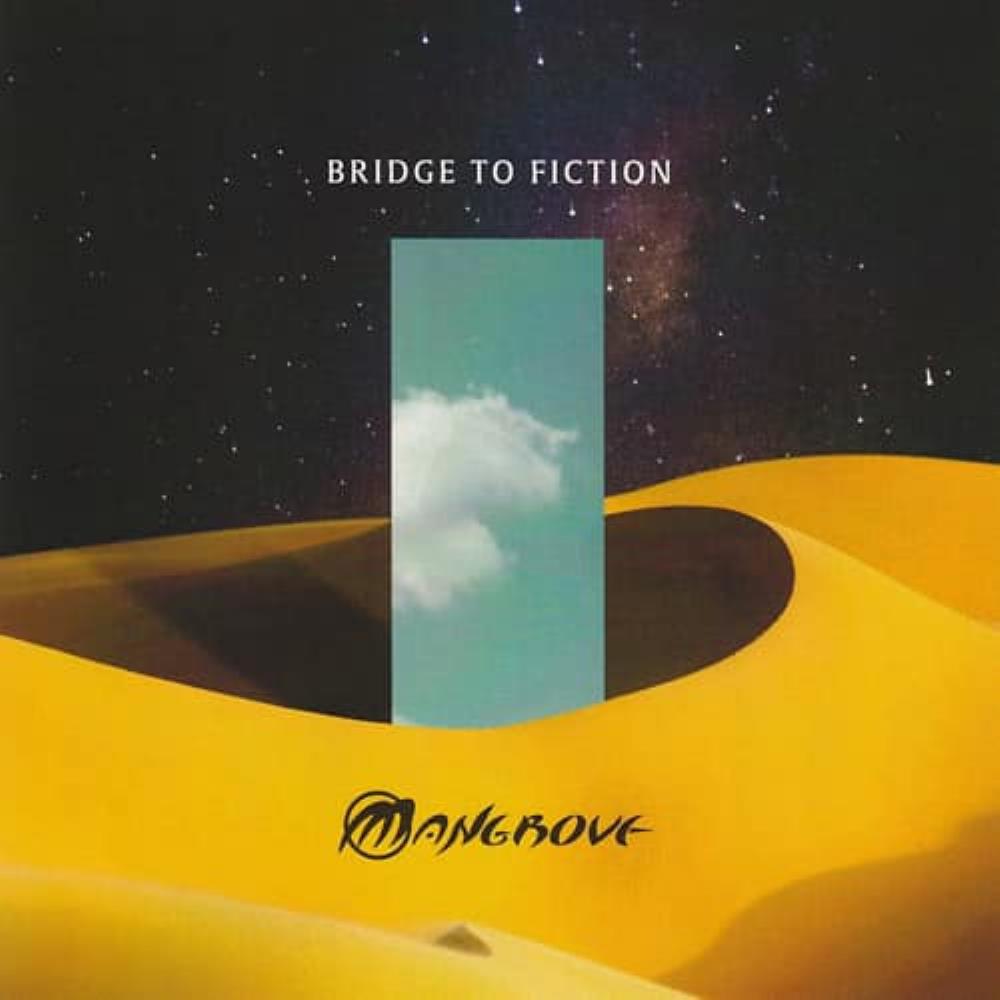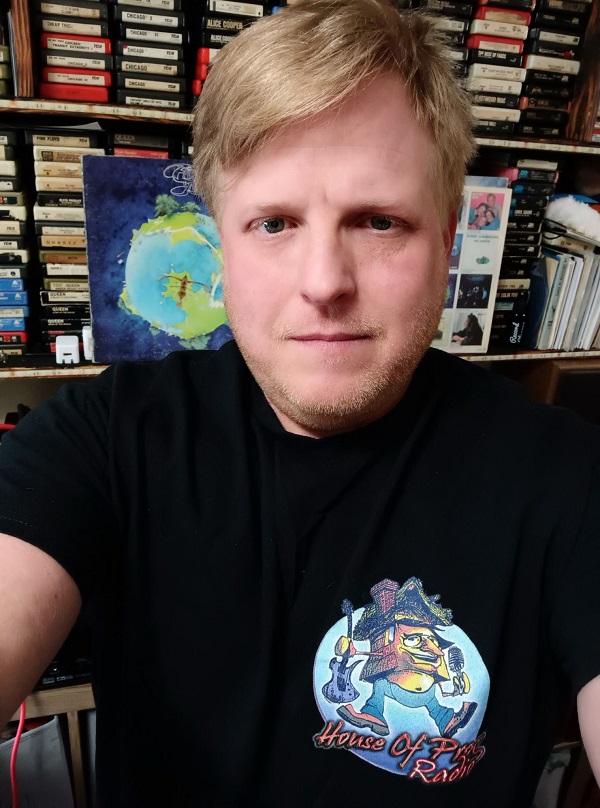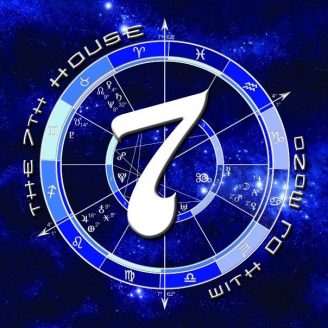 Guitarist, vocalist, and keyboard player Roland Van der Horst is, after 15 long years, back in the prog game with a long-awaited new album, which I happily jumped on as I really enjoyed all their previous recordings. Longtime bassist Pieter Drost and new drummer Lex Bekkernens complete the tight line-up. Yes, its symphonic prog with long extended pieces that fit nicely in the mid-period Genesis, Camel and Pink Floyd mold that nevertheless has its own distinct flavour. I always found that Mangrove needed a slight adaptation of the listening process, even repeated auditions to luxuriate in their style. I found my second go through to be extremely revealing, as Roland has mastered the art of orchestral arrangements to perfection. I must also admit that while his singing was always good, it has improved considerably with maturity of a long hiatus.
Guitarist, vocalist, and keyboard player Roland Van der Horst is, after 15 long years, back in the prog game with a long-awaited new album, which I happily jumped on as I really enjoyed all their previous recordings. Longtime bassist Pieter Drost and new drummer Lex Bekkernens complete the tight line-up. Yes, its symphonic prog with long extended pieces that fit nicely in the mid-period Genesis, Camel and Pink Floyd mold that nevertheless has its own distinct flavour. I always found that Mangrove needed a slight adaptation of the listening process, even repeated auditions to luxuriate in their style. I found my second go through to be extremely revealing, as Roland has mastered the art of orchestral arrangements to perfection. I must also admit that while his singing was always good, it has improved considerably with maturity of a long hiatus.
Leading off with a 10minute+ title track is a case in point, as it’s a rather upbeat and pleasant introduction, not far from the Flower Kings in a certain way, simple yet also sprinkled with a plethora of twists and turns, variations that flow quite transitionally, highlighted by the majestic vocal chorus. Slippery synth flutters evoke a sense of gentle adventure, emboldened by a sublime guitar line that has a melody to ache over. Injecting calypso steel drum effects and a rolling bass line keep the attention firmly focused on the next orchestral segment, where a violin rules the waves, blurring the thin line between symphonic and neo to perfection. The finale and highly addictive vocal is in a haze as if caught in the desert (“I can see the setting sun”), a shimmering choir mellotron ushers in a lead guitar solo that shudders in ornate beauty and profound exhilaration.
Alternating between light and dark, “Reflection” wanders in sonic realms that are wholly unexpected, issuing pinging electronic elements, layers of attentive keyboard orchestrations, and volume pedal caresses from the lead guitar a la Hackett. The elevated vocal is exalted and utterly stunning in its poignancy, tingling the spine and seducing the ears.
The ominous intro on “Stay” is only a prelude to a temperately sung ballad, sincerity incarnate, led by a deliciously carving bass guitar phrasing, swaying organ, delicate flute, and a marshalling drum pace that might evoke a few Floydian influences. One can easily foresee the impending arrival of a gloriously melodic solo on the guitar and well, its quite the beauty. Magnificent pipe organ to finish off the vanishing melody.
Change of pace on the wickedly technical “Chasing Something” that certainly demonstrates some flavourful chops and blitzkrieg technique from all three musicians, fast and furious like some high-speed pursuit on the highway. But it’s the e-piano solo that seals the deal, a masterful input of jazzy creativity into the mix. The lead guitar solo is sublimely complex, even tortuous where needed, celestial at times but lightning quick and thunderous.
I thought that I was listening to Edgar Winter’s Frankenstein for a second on the merciless instrumental “A Touch of Light”, with alternating flashes of a Saharan mirage (as depicted on the glorious cover art), hard-nosed guitar riffs and chugging organ, bruising bass onslaught and some nasty drum percussives take this track into another realm of expression. Intense like the arid heat emanating from the broiling sand, the sonic caravan moves into the granular storm undaunted, crossing colossal shifting dunes and hoping for some impending oasis of deliverance. The elongated axe solo is a glimmering delight.
Speaking of oasis, “Raindrops Falling” can be a blessing when faced with dehydration, as the pastoral flute (from Bart Laan) and acoustic guitars lead into glittering expanses, where sweet vocals rest in harmonious eloquence. A radical departure from the previous track’s fury. Roland shoots off a suave synth foray, quickly followed by a trilling fretboard line, yet the melody remains simple and effective. This could have been a strong composition on And Then They Were Three, what with the underlying Banksian organ motif and that sunny vocal line that gives hope to those how heal from the music.
And how do we close off this majestic album? In true prog fashion with a titanic 24 minute + epic piece, “A Call to Arms” which may just be one of the finest epics of 2024. Densely cinematographic, deeply committed to a story that defines our troubled times, as the human race seems utterly blinded by piss-poor politics, overt media manipulation as well as living in a world of lies, omissions, distortions, and selfish dispositions, full of entitled madness. Are we really progressing to a better world? The music displayed is fraught with agony, despair, and rage. The bass muscles in on the raging organ, the drums pounding like a missile barrage as the ruthless guitar ravages the frontline with battle hardened vehemence. With endless transitions and variations keeping the interest alive and kicking, the morbid storyline moves forward like an armoured column veering towards the fight. The afore mentioned orchestral arrangement qualities that Roland has mastered are highly obvious here, boldly symphonic, and imposingly reflective. Ornate piano flourishes provide momentary lapses of anger, crying out for hope and salvation, and serene synth bandages the pain for a few seconds. Laan provides another lovely flute spot, that truly hits all the pleasure nodes, in harmony with the piano and the acoustic guitar. “After all these years, we have waited for so long”. The final is a guitar crescendo for the ages, a patiently crafted, highly memorable, and melodically addictive slice of electric heaven, that would induce Latimer, Hackett, Rothery and Gilmour to applaud like an iconic quartet in absorbed appreciation.
While 15 years of patience was well worth the wait, I hope that Roland and crew receive the necessary impetus to continue in this vein, as this is quite the spectacular release, that will compete mightily in my top 2024 albums list.
5 imaginary spans












